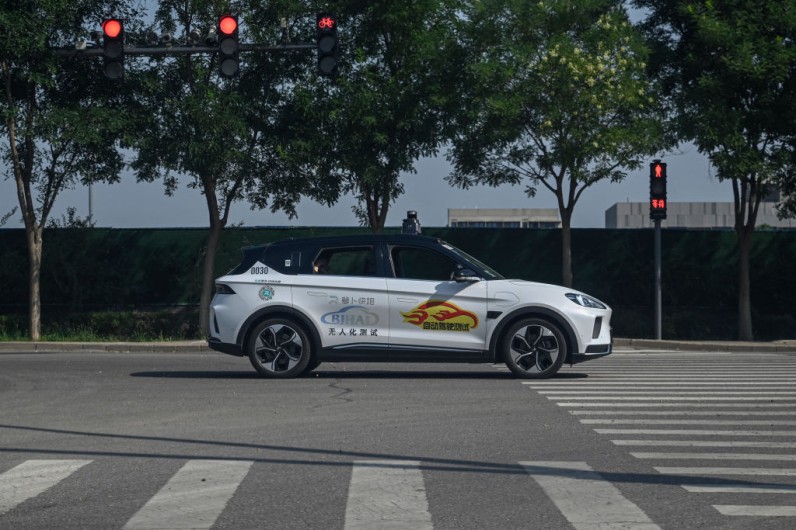
A driverless ride-hailing car in China was involved in an incident where it collided with a pedestrian.
In a statement to Chinese media, Chinese tech giant Baidu explained that the car started moving when the light changed and had a slight interaction with the pedestrian.
Baidu Driverless Car Receives Support After Hitting Pedestrian in China
The individual was transported to a medical facility where a thorough examination revealed no apparent external injuries, according to Baidu.
However, instead of garnering negative reactions, people on social media surprisingly supported the carmaker's perspective. The public argued that the pedestrian was allegedly crossing the road against the traffic signal.
Online images depict an individual seated on the street in close proximity to the driverless vehicle, which is equipped with rooftop sensors. In a post on X, the English-language Shanghai Daily newspaper stated that the pedestrian had violated the law, and comments on social media predominantly supported Baidu.
A driverless taxi operated by #Baidu’s autonomous driving platform Apollo Go collided with a pedestrian in Wuhan on Jul 7. Baidu confirmed the incident, saying the woman crossed the street on a red light. Netizens largely supported Baidu, pointing out that the pedestrian broke… pic.twitter.com/7NcAqKucpx
— Shanghai Daily (@shanghaidaily) July 9, 2024
The recent incident in Wuhan serves as a clear example of the difficulties autonomous driving encounters when navigating through complex scenarios.
Driverless Cars Face Challenge in Detecting Rare Scenarios
According to AP News, an expert mentioned that the technology might face challenges when it comes to handling unconventional behavior, like vehicles or pedestrians that don't follow traffic laws.
Baidu, a Beijing-based company, is at the forefront of autonomous driving development in China.
In Wuhan, a major city in central China, there is a significant "robotaxi" operation consisting of 300 cars. Wuhan was the location of the world's first major outbreak of COVID-19 in early 2020.
Apollo Go, the ride-hailing service, is also available in select areas of three additional Chinese cities: Beijing, Shenzhen, and Chongqing.
In May, the company unveiled its latest driverless taxi, the sixth-generation model. They proudly announced that they had managed to significantly reduce the unit cost to less than $30,000, a reduction of over 50%.







Join the Conversation